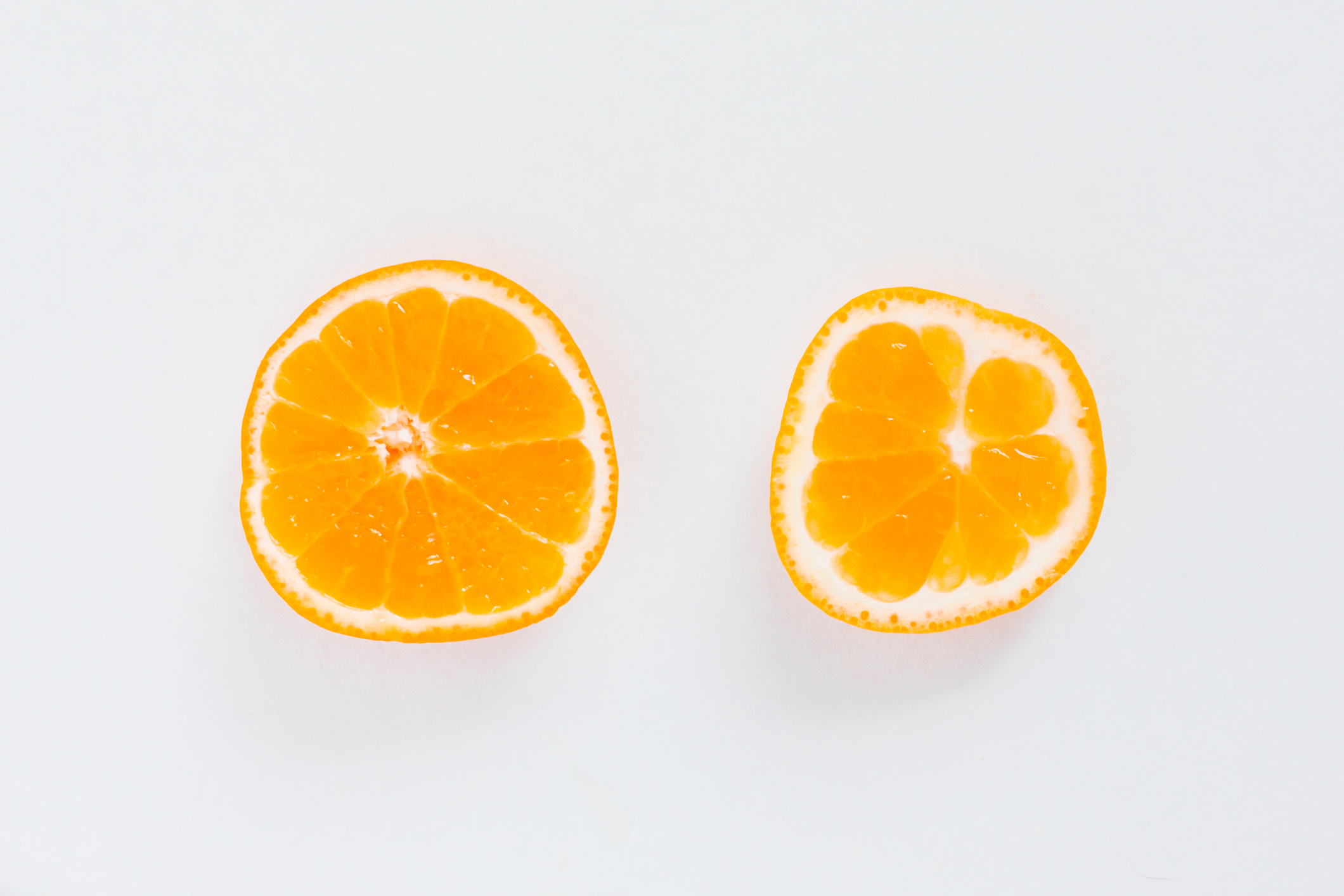Going braless does your boobs good—it’s time we embrace the bra-free movement
Going braless isn’t just a comfortable choice, it can actually have more benefits than you realise, explains Esther Newman.


Esther Newman had a liberating braless experience several years ago. That got her thinking: is wearing a bra daily necessary? And is it actually good for you? She consults the experts to find out the benefits of going bra free.
A few years ago, I paraded braless at a music festival, casting by my traditional bras for bare-breasted freedom. It was sweltering hot; like everyone else, I was caked in three days’ worth of mud, sweat, and glitter (as well as sticky apple cider that a tipsy friend had split down me). Losing the bra was hardly a radical choice to make: most other women had done the same, and it was a festival—we all know that people are a lot looser and a lot less uptight at festivals.
Before that, I was always on the hunt for the newest and best bras, and went as far as to learn how to measure bra size myself. But after that one weekend, something shifted for me. Without the underwire digging into my ribs and tight elastic straps rubbing my shoulders, I felt so much more comfortable; and not even my favorite non-wired bras could compete. From that point on I gradually started to go bra-free more and more, embracing "saggy boobs" without shame.
How I started going bra free
At first, I chose my moments carefully—quick trips out to the corner shop for a pint of milk, or nights out with my closest friends—until it became second nature. Now I often go braless day-to-day, sometimes at work and on dates depending on how I feel. This piece you’re reading right now? Written while braless.
Myths about going bra free
As it turns out, I am not alone. More and more of us are rejecting bras. Google ‘braless’ and you will be inundated with articles warning about the so-called ‘dangers’ of going bra-free, based on disproven scientific claims (many of which, interestingly, are written by members of the lingerie industry).
Of course, it is important to note that, for many women with larger breasts, bras offer much-needed support and reduce back pain. But there's a difference between the practices that we enjoy and find empowering, and those society has drilled into us—like growing a hairy bikini line.
I think it’s about time we address our relationship with the bra and the myths surrounding the braless lifestyle. At the end of the day, when it comes to deciding what to do with your own boobs, there really is no wrong choice.
The braless movement: A brief history

Women protesting braless at the Women's Liberation Movement In Washington, United States On August 26, 1970
The no bra movement is not a new phenomenon. Rather, its origins can be traced back to the Women’s Liberation movement of the 1960s. In particular, the protest at the Miss America Pageant of 1968, where protestors threw products closely associated with womanhood—bras, girdles, corsets, hairspray, makeup, false eyelashes and mops—into dustbins in order to protest against “enforced femininity”.
Ever since, the decision to not wear a bra has become a strong political one, often considered a woman’s refusal to conform to societal pressure to look or act a certain way. Come the 1970s, the ubiquitous no-bra look was a lingering statement in an era of free love and a new decade of Disco. The 1980s and 1990s saw the return of the ‘power bra’, thanks to the rise of Victoria’s Secret, Madonna’s iconic Jean Paul Gaultier cone bra (debuted on her Blond Ambition Tour in 1990), and the world-famous 'Hello boys' Wonderbra adverts that premiered in 1994.
While society’s pressure on women to wear bras has lessened somewhat, today the decision to go braless is still a politicized one – and that is because of the nipple. Eight years after filmmaker Lina Esco instigated the #FreeTheNipple movement, a woman’s bare breast is still censored on Instagram, while a man’s is not. Instagram’s ban just underlines a fact that women have grappled with for decades—unlike other body parts, our breasts (and what we do or don’t wear over them) have never been neutral. Even in 2021 they still carry outmoded cultural and sexual expectations.
But do bras prevent sagging?

When it comes to going braless—as with so many other issues—the Internet is a hotbed of fearmongering. Look for information on the pros and cons of not wearing and a bra, and you’ll find a series of reiterated myths that have little to no scientific basis. The most popular—you know the one, that not wearing a bra ‘will make your breasts saggy’.
Clinical Professor of Surgery at UCLA and a founder of the US National Breast Cancer Coalition, Susan M. Love, MD, MBA explains that there is no medical reason to wear a bra. “Except for the women who find bras especially comfortable or uncomfortable, the decision to wear or not wear one is purely aesthetic—or emotional,” she writes in her book, Dr. Susan Love's Breast Book (2015). “If you don't enjoy it, and job or social pressures don't force you into it, don't bother.”
Are bras bad for you then?
No, bras are not bad for you. But as outlined above by Susan M. Love, MD, for most people there is no medical reason to wear a bra. The majority of people wear bras for emotional or aesthetic reasons.
But what about the alternating arguments? For those who choose the bra-free lifestyle, what are the benefits?
The benefits of going braless
There are four health benefits to going braless:
1. It can improve breast shape and tone the muscle
Countering the saggy boob argument, evidence shows that wearing a bra can make the muscles and ligaments that support the breasts lazy over time, which can actually lead to breast sagging. In fact, in one 15-year-long study, researchers found that women who never wore bras experienced less back pain and found that, over time, their breasts were firmer, rounder and perkier. It can take some time for those with heavier breasts to feel that lack of back strain though. According to Dr Lucky Sekhon,, “[i]t can take weeks to months to build up the strength in their chest and back muscles for the breasts to become well supported without a bra.”
2. It can improve your circulation
Wearing a bra that is the wrong size can also cause issues breathing and with circulation. A bra that is too tight, especially an underwired bra, can cause constricting around the ribcage and stop the flow of blood to the muscles in the back and chest wall. According to Dr Sekhon, this is a more common occurrence for those with larger breasts, “as bras supporting larger breasts tend to fit tighter than those worn by women with smaller breasts measuring A to B cup in size.”
3. It can help improve your skin
If you don’t wash your bra every single day—which many of us don’t (let’s be honest, who has time for that?)—bacteria and dirt can easily build up. Aggravated by general sweat and skin rubbing against the material of your bra, this can lead to body acne. At worst, it can even lead to uncomfortable chafing, fungal infections, or a bacterial infection, especially in the sweaty area under your breasts. Without a bra, your breasts are free to breathe and your skin will be prevented from rubbing up against itself.
4. It can actually reduce pain
This depends hugely on each individual case, but it has been proven that wearing the wrong size bra can do your body a lot more harm than going completely braless. An ill-fitting bra can cause shoulder, back and neck pain, and a too-tight underwire can push into the breast tissue and aggravate the breast, especially for those with larger breasts or those who lead active lifestyles.
Bra-free alternatives to try
So, I’ve convinced you to reconsider your trusty wired bra and to dip your toes into the braless lifestyle, at least once in a while. But, where do you start with that?
There really are plenty of bra alternatives on the market, depending on how much support you’re comfortable with and the event you’re dressing for.
For little to no support
Try nipple pasties
For those days when you want the complete no-bra feel, but don’t want to risk a nipple slip, nipple pasties are your best go-to. These are also great for the kind of special events that call for strapless dresses and daring necklines.
For medium support
Try camisoles, vests and ‘brami’ tops
Wearing a camisole, vest top or ‘brami’ – the love child of a bralette and cami – is just as comfortable as wearing a thin t-shirt underneath your clothes, but with the added bonus that your breasts are being cradled with a soft, stretchy fabric that moves with you. Some, even have added non-padded ‘shelf support’.
Still want to wear a bra?
Going braless isn't for everyone. For some people, practical or medical reasons make them necessary. For others, it's emotion driving that need. Whatever is behind your choice, if you do want to wear a bra, make sure it's the right one for you. It is vital to make sure that you measure yourself carefully before shopping. We’ve put together an expert-approved guide to measuring your breasts at home so you can buy a new bra safe in the knowledge that you’re not going to put yourself through any pain. This is particularly important when it comes to buying the best sports bra for your at-home workouts, where support cannot be underestimated. Or, you may want to invest in the best bralettes, which are generally designed with comfort at the forefront. Can't decide in the argument of bras versus bralettes, which is better for you? We'd say the winner boils down to personal preferences, so try them both.
Sign up to our free daily email for the latest royal and entertainment news, interesting opinion, expert advice on styling and beauty trends, and no-nonsense guides to the health and wellness questions you want answered.
Esther is a features and fashion writer and stylist, who is particularly focused on the intersection between fashion and social issues and feminism. Her work has been featured in woman&home, Refinery29, ELLE, Stylist, Dazed, Grazia, HelloGiggles, and HuffPost.
She also founded The Activist, a fashion, arts, and culture magazine, dedicated to celebrating young women and non-binary people in politics and protest.
When she’s not writing and styling, Esther is an avid bookworm and usually devouring something from the latest Women’s Prize longlist, getting crafty with embroidery art, or enjoying a jaunt around the Suffolk countryside.
